Introduction
Amazon Local was a deal-of-the-day business by Amazon that was founded in 2011. It was a web solution operating under the URL .
The concept was not new in that other companies had already been successful at it. Groupon is the leader in this business and was once described as the fastest growing business. Amazon had implemented the concept in the US and in the UK, where it operated under the URL. The company, however, ceased operations in 2015 after it had proved a failure.
The Website
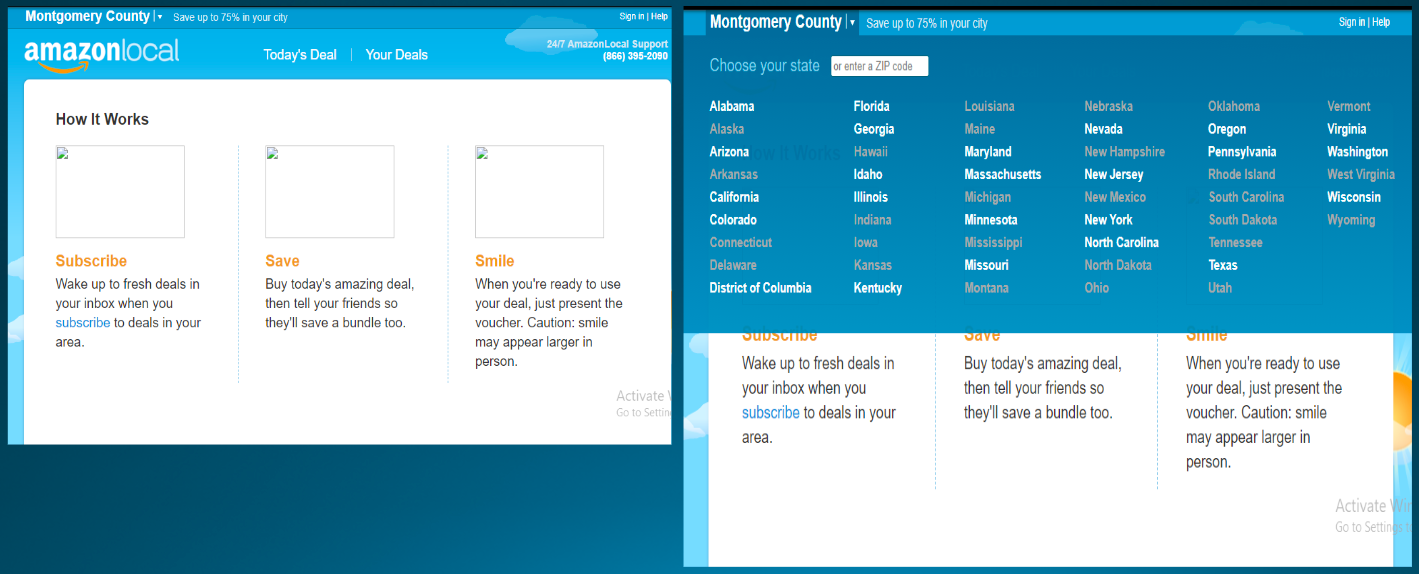
The above screenshots are obtained from internetarchive.org’s wayback machine. It shows an “about page” with “how it works” text. From the first slide, a visitor to the site is offered an option to subscribe. The concept was that when a user signed up to the website, they would get notifications about available deals in their locality. On the top left dropdown labeled Montgomery County, the dropdown reveals an overlay that displays all the states the business was available in. As can be seen in the second picture, it was available in many states in the US (marked in white).

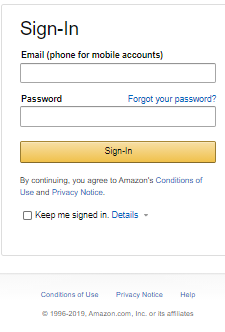
When one clicks on the “Today’s Deal” button, they’re redirected to a typical deals page. In this case, it presents offers for Brooklyn. An example can be seen in a spa deal with a picture on the left, a description in the middle, and prices on the right. The right pane also contains a clickable map indicating the location of the shop. There are contact details of the shop where one can call or take the map to the location. The buy button is not archived on the web, but it seems like a typical payment gateway page. Below the “Buy” button, there is a meter indicating the time left on the deal. The “Your Deals” button redirects to a sign-in page. It is not possible to sign in now, but if that were possible, one would be able to see all the deals that they have subscribed to.
Business Page
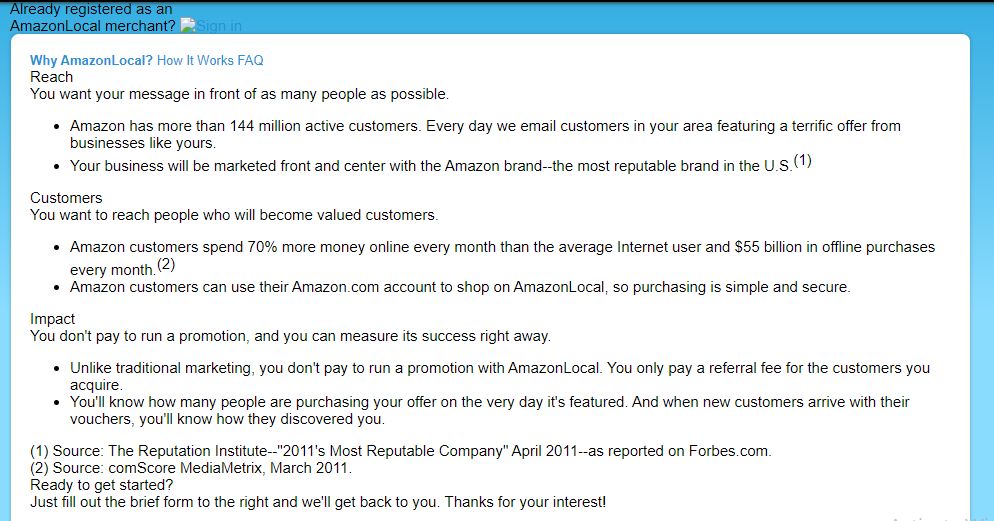
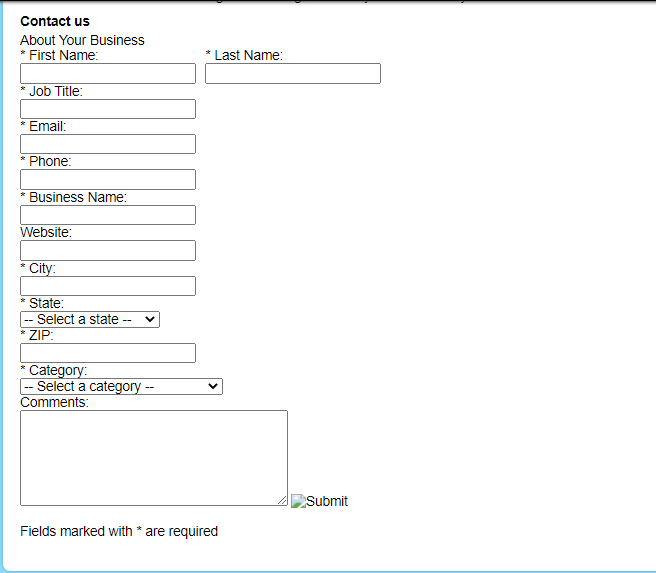
The above screenshots are of Amazon Local web archive from the Internet Archive for April 03rd, 2012. It shows a promotion message aimed at attracting businesses to their website. The screenshot on the left is just plain unadulterated by Amazon’s braggadocio about their userbase. They talk of having 144 million customers; here, Amazon is promising business customers from the parent company; if only it were so easy. As will be noted in the section on the business model, day-of-the-deal websites are more of a promotional opportunity than revenue-generating one. Amazon seems to be aware of this fact and does also take time to praise its top-notch advertising department. The second screenshot on the right is a typical sign-up form.
Day Deal: Business Model
Deal of the day business is also called flash sales/ daily deal/ one deal a day. It is an e-commerce business concept where single products are offered on a website for between 24-36 hours. Prospective customers register as users on deal-of-the-day websites and receive offers through emails or social media about deals available in their area. Since 2011, deal-of-the-day websites have become popular, but there are concerns about the sustainability of the concept. Groupon is the leading company in this concept.
Business Style: Deal Communication
Deal descriptions are usually emailed to customers after the deal has gone live. Sometimes the descriptions are humorous, which is often criticized by e-marketing professionals. However, there is evidence that the aggressive style of marketing is effective at luring buyers. On some websites, customers will receive email notifications about deals every day or weekly. Customers will then interact with the website, and the website will usually retain the customer data (Perez, 2015). This is an important part of the model in that the retailer never gets customer data in a way that they could circumvent the protocol.
Deal-of-the-Day: Industry History
The deal-of-the-day business concept became popular when woot.com was launched in 2004. Woot itself was a modification of an earlier version of uBid. The industry had grown to more than 100 sites by late 2006. Groupon entered the market in 2008 and broke the record for the fastest e-company to reach a billion-dollar valuation. Internet giants such as Google and Facebook also tried their luck with the sector, but all failed; however, the rise of social media has helped the industry to grow because of the viral phenomenon.
Deal-of-the-Day: Business Model Revenue
Deal-of-the-day business concept works by letting retailers sell discounted products and services directly to deal company customers, where the deal company gets a share of the profits. With this kind of model, the retailers are able to build brand loyalty and can sell excess inventory faster. Most deal-of-the-day websites coordinate with local businesses to create deals that are cheaper than recommended retail prices. The parties agree on a group buying formulae to offer a minimum and a maximum number of deals. Usually, deals are available for between 24-36 hours, but sometimes, longer periods have been shown to increase sales and let multiple deals going on in one location concurrently.
Business Model: Marketing
Many businesses that are in contract with deal-of-the-day website companies do so as a means to market themselves as opposed to generating profits. The retailers will typically get little profit after factoring in the massive discounts they have to offer and the payments they make to the website company. The deals are therefore categorized as loss leaders. Evidence shows that the companies gain increased sales after running deal-of-the-day deals. In as much as deal-of-the-day customers are price-sensitive deal hounds who do not return unless there is a discount, evidence shows that deal-of-the-day can increase profits for start-ups by as much as 30%. According to a study by Dholakia( 2011), 55% of organizations that ran deal of the day promotions recorded increased profits, 26.6% recorded losses, while 17.9% broke even.
Amazon Local: Digital Transformation
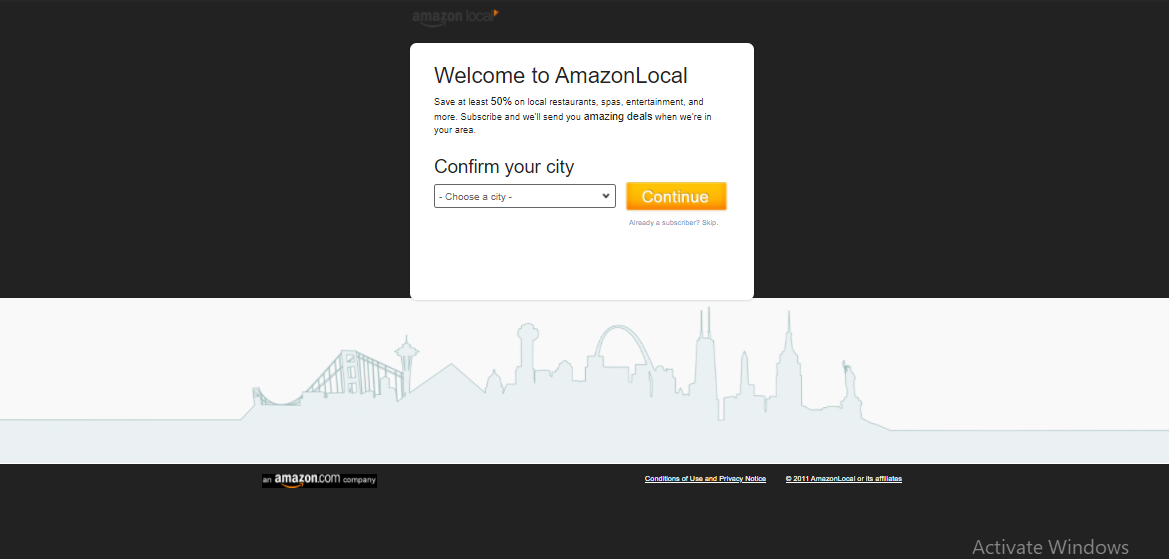
This is the first UI of Amazon Local that the Internet Archive captured on the day of its launch on June 04th, 2011 (“Welcome to Amazonlocal,” 2011). The site can be seen as simplistic with a basic user interface where one can select their city from rudimentary HTML select options. The buttons are not enabled, and they do not lead anywhere. On the footer of the website, there seems to be missing important links to careers, about us, and so much more that will be revealed in later versions. The next time this page changed was on July 17th, 2011, when the default text on the select changed from being Ashburn, Virginia to “choose a city” (“Welcome to Amazonlocal,” 2011). Still, no header and no footer/header to access the home.
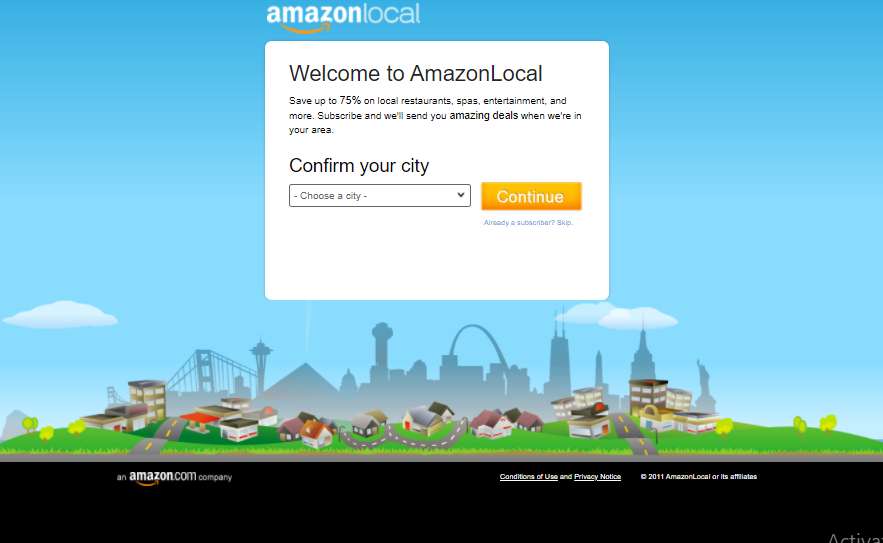
The above UI has been retrieved from the internet archive, and it shows an improvement. The background to the sign-up modal has changed to include imagery of a city; this is probably meant to capture Amazon Local’s spirit of connecting businesses. Above the modal, there is a clickable button that redirects to the homepage, although it has not been captured by the Internet Archive (AmazonLocal, 2011). A second archive captured on November 24th, 2011, shows an improved subscribe page where the dropdown menu works, revealing that by this time, Amazon Local is available in the states of Arizona, Alabama, California, Colorado, DC, Florida, Georgia, Idaho, Illinois, Kentucky, Maryland, Massachusetts, Minnesota, Missouri, Nevada, New Jersey, New York, North Carolina, Oregon, Pennsylvania, Texas Virginia, Washington, and Wisconsin (AmazonLocal, 2011)
Amazon Local: Digital Evolution
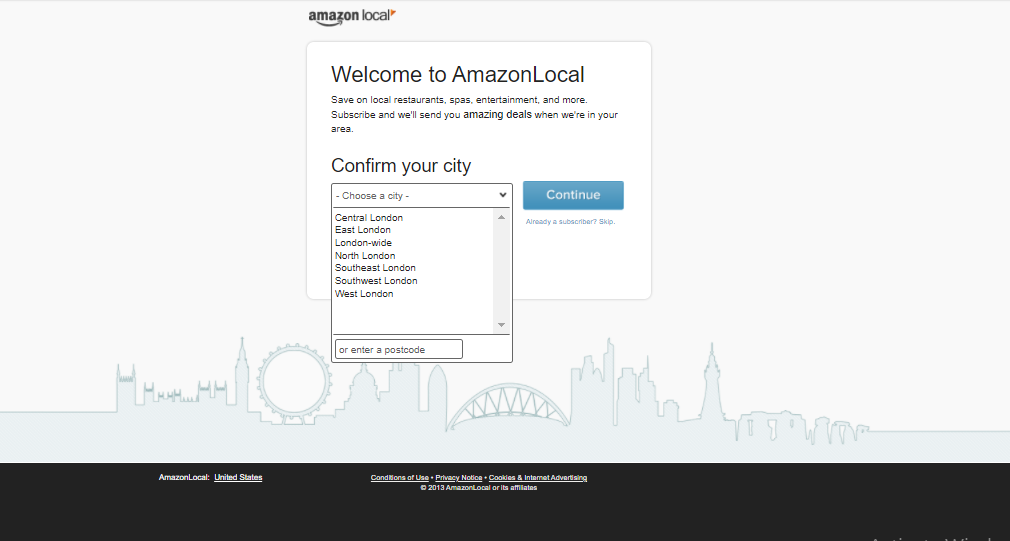
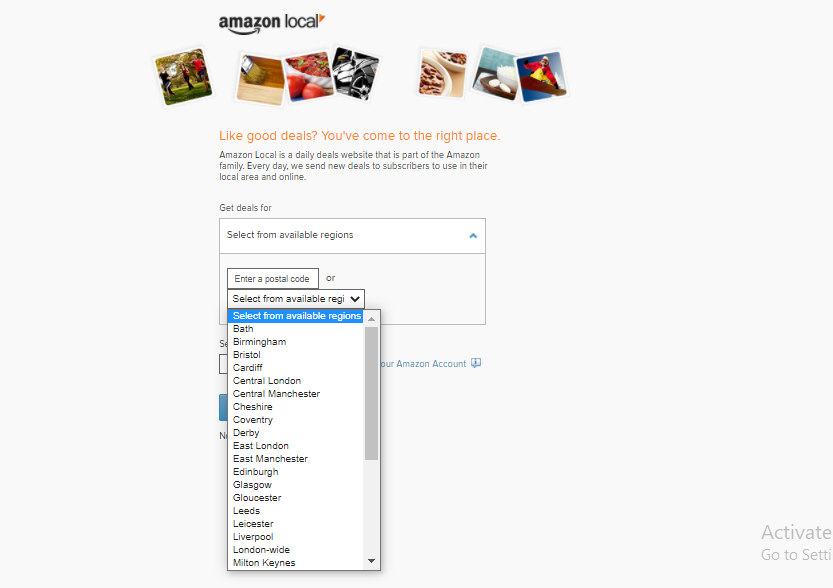
Amazon Local launched in the UK on August 29th, 2012, under the base URL. The above screenshot has been obtained from the Internet Archive of a snapshot of the site as of January 12th, 2013, a few months after it had launched there. As evidenced by the image, the UI is similar to that of the US site. The screenshot shows the subscription page and reveals that the options on the dropdown are only for London- all the locations shown are zones in London. The second screenshot on the right shows a transformed subscription page with more locations all around the UK.
Digital Transformation: Just Before Closing
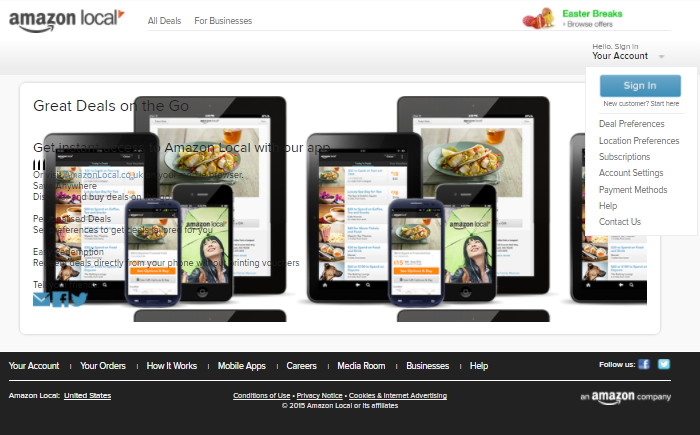
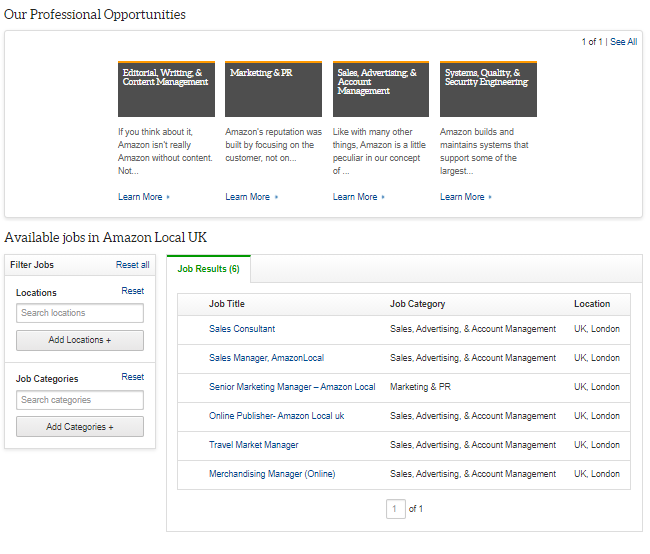
The above screenshot is of Amazon Local retrieved from the Internet Archive of a copy of the site on March 02nd, 2015, a few months before the site closed. The screenshot is just for the path /mobile and indicates that by 2015, Local Amazon had become so advanced to even offer mobile apps. The website also has a clean advanced UI with buttons on every page to navigate to the home page and the main sections of the website. By this time, the site is offering services to multiple locations both in the US and the UK. Interestingly, on the right screenshot -a copy of the site from Internet Archive on February 15th, 2015- it shows that the company career page still had a lot of openings such as sales consultant, sales manager, senior marketing manager, online publisher, travel market manager and merchandising manager. It is also interesting to note that all the openings were for the London offices.
Why Amazon Local Closed
Amazon’s Impatience
Amazon Local was launched in June 2011, and by 2013, they already were offering daily deals to over 100 locations across the US. Amazon tries a lot of business ideas, and its founder Jeff Bezos has heralded this as a good thing (Perez, 2015). Amazon Local is not the first business that Amazon has tried and failed. For instance, one of their biggest flops is the Fire Phone which was released in 2014 but failed to compete against established brands such as iPhones and Android. Another Amazon failure was Amazon Wallet which was canceled six months after launch (Perez, 2015). It seems like a pattern for a large company with a lot of cash that is experimenting with a lot of things and pulling the plug at the onset of a little turbulence.
Competition from established Brands
Amazon Local failed because they got outcompeted by rival companies. Groupon is the king of the deal-of-the-day industry and has cemented its position in the industry. In an industry that is not particularly differentiated, Amazon could not make it in such a short while (Perez, 2015). Interestingly, Amazon probably would have acquired more market share had they stayed longer, but they pulled the plug in just four years.
Why Amazon Local Failed
The product was the same
The problem with Amazon was that their product was not special. Sounds harsh, but Amazon was just riding a wave and copying the hottest product of the week. Groupon had just been established in 2008, and within a year, it had broken the record for the fastest online company to attain a billion-dollar valuation; obviously, Amazon, with its bottomless coffers and gigantic ego, would want to give it a try.

The above screenshot is the Groupon sign-up page; it is evident that the resemblance with that of Amazon is uncanny, including the slogan “save up to 70%” (Groupon® Official Site, n.d.). This shows that Amazon was doing the bare minimum to win over a market of extremely frugal consumers, and it is no surprise that the business did not work.
Industry Turbulence
In a previous screenshot, it was shown that even a few months before Amazon Local closed shop, they were doing massive recruitment at their London office. This shows that the decision to close was more abrupt than usual, and it was sudden death. The daily deal industry was not having a good year. Living Social, which is partly owned by Amazon, was also laying off 20% of its workers since it was moving away from deals to focus on “experience” (Perez, 2015). In the same breath, Groupon had also announced 1100 layoffs and was shutting operations in several overseas operations (Perez, 2015). Given that Amazon was not the household name for daily deals, it is unlikely they were doing well. When Amazon was asked about the closure of Amazon Local, their response was that they had learned a lot about the business and would try again later in the future.
Recommendations
Differentiate the Product
The deal-of-the-day industry has its challenges in that it is quite difficult to really differentiate the product. It is just a platform for retailers to offer deals to local customers. It has been established that companies usually go on deal-of-the-day websites not to make profits but to market themselves. Moreover, most deal-of-the-day customers are frugal people who would not shop without a discount. Despite these challenges and the lack of cash motivation, it is still possible to come up with a better app, better UI, and better deals, especially if one is to enter the industry late. As a matter of fact, the lack of product diversification in the industry is why companies cannot afford to make a half-hearted entry into the industry like Amazon did. Amazon is not a small company and has a lot of cash that would have enabled them to develop the best product in the industry.
Stay Longer
Amazon Local was launched in June 2011 and closed shop in August 2015. This is barely four years of operation. Amazon has been known to engage in flyby investment schemes where they invest products and fold them before they have even left the ground. It is understandable that Amazon is not interested in wasting time on non-starters that are not their core business, but without this context and judging their failed projects on their own merits, maybe the side projects would have faired better if they had been given more time. It would seem that Amazon ditches its experimental side projects the moment they encounter a little turbulence. For instance, they dropped Amazon Destinations after only six months.
Start Small
Amazon, the parent company, started in Jeff Bezos’s garage and grew into the giant e-commerce company that it is today. Amazon’s spinoff projects are like the spoilt child that splurges their father’s fortune without knowing the difficulty it took to generate the wealth. The companies start too big and do not take time to grow into the market. Amazon local started in June 2011, and within one year, it was operational in 27 states. Not only had they expanded to more than 100 locations in the US, but they had launched in the UK by August 2012. A few months after landing in the UK, they had expanded to dozens of locations. It is no surprise that the moment they encounter a little inconvenience, they come tumbling down because they have become wide but not deep.
References
Amazonlocal for businesses. (2012). Web.
AmazonLocal: Save up to 75% in your city. (2011). Web.
Dholakia, U. M. (2011). How businesses fare with daily deals: A multi-site analysis of groupon, livingsocial, opentable, travelzoo, and buywithme promotions. SSRN Electronic Journal. Web.
Groupon® official site | online shopping deals and coupons | save up to 70% off. (n.d.). Groupon. Web.
Perez, S. (2015). Amazon to exit daily deals with closure of amazon local. TechCrunch. Web.
Welcome to amazonlocal. (2011a). Web.
Welcome to amazonlocal. (2011b). Web.
